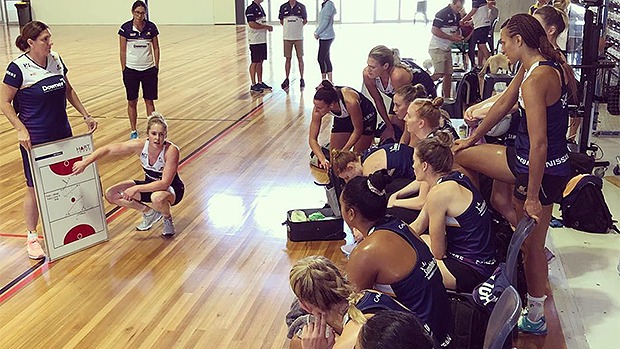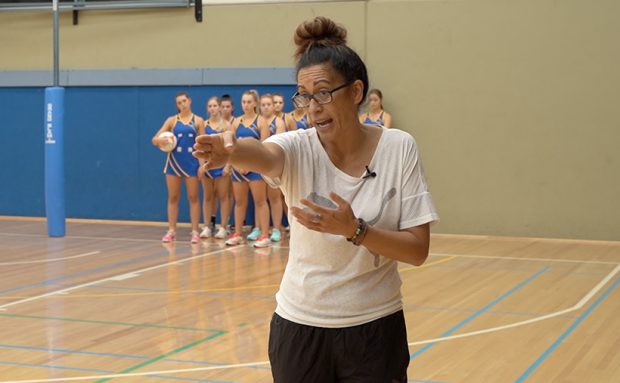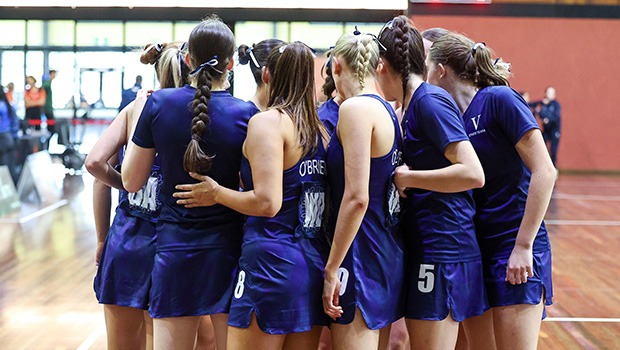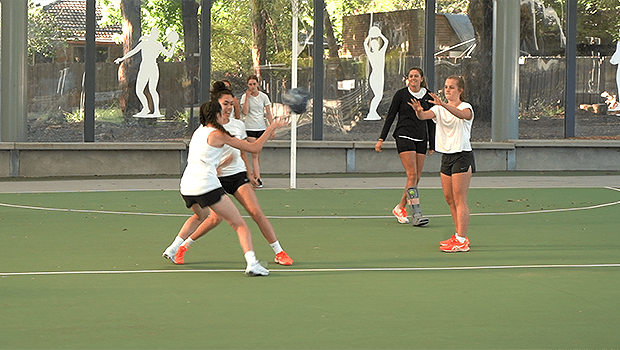– by Heath Brown
As coaches who have day jobs, we all scramble to find the time to develop a game plan as best we can.
Unlike professional coaches, we don’t have endless stats, video analysis and competitor intelligence at our disposal, and nor do we have hours or days each week to prepare for our next competitive hitout.
So what are the efficient ways we can approach game planning at a grassroots level? Elite coach and former Australian men’s team captain Heath Brown shares his thoughts.
1. The 80/20 rule
Most coaches would agree that dedicating the majority of your game plan to your team’s own strengths is key, rather than focusing too much on what the opposition’s strengths are. There’s no science to this, but an “80/20” rule is a good start. If your pre-game talk is 10 minutes, spend eight of those minutes talking about the netball you want to put out there, and a couple of minutes on what you expect from the opposition and how to nullify or exploit that.
JOIN NOW: PLAN YOUR SESSIONS WITH OUR LIBRARY OF 400+ DRILL VIDEOS!
2. Play your game
The old catch-cry “play our game” is still a solid go-to, but only if it has substance. A good indicator is to ask your players if they know what their team’s style of netball is. If they don’t, sit with them, discuss it and agree on it. The last team I coached, for example, agreed on our style being “Wear the opposition down in defence all through the court, and have speed of ball in offence”. Think of it as a top-line game plan that doesn’t have to be revisited every week.

3. Link training to your game plan
You should know your game plan well before training, as your training plan should follow on from a game and lead into the next. An example for more advanced teams: “Last week’s game we struggled with ‘X’, so we will refine that tonight in preparation for this week’s game. Then we will work on ‘Y’ as we know our opposition this week can be exposed if we do that well”.
4. Be flexible, not concrete
Players need to understand that game plans are just that – some thinking on what might win the game. External influences can kill any solid game plan: umpire interpretation, weather conditions, opponent line-ups etc. Players should be encouraged to be flexible with the game plan if it doesn’t play out as intended! I’ve always called them guides, not rules.
NETBALL TRIALS: CHECK OUT OUR TRIALS MANAGEMENT PROGRAM!
5. Real-time planning
Don’t leave your game plan to the night before. Planning for your next training or game is best done straight after a game – so the areas of focus are fresh – and also in a game in real-time. If your players are more advanced, set plans in five-minute increments or quarters, not just whole games.
6. No risk, no reward
A safe and conservative game plan might secure you an expected win, but if you are the underdog or in the cauldron of finals, your game must have some risky plans to get the reward. For example, a finals game plan should encourage players to do ordinary things in extraordinary circumstances and to not get carried away, but also to incite players into extraordinary action in extraordinary circumstances. If players aren’t prepared to take a chance at the right moment as part of your game plan, those match-winning intercepts or wondergoals might never happen.
7. ‘Crowdsource’ game plans
Make it a collective effort. Players should be the main source in determining your game plan, and then support staff (if you have them). The sign of a great head coach is one who does little to architect a game plan’s detail, but instead extracts it out of the extended team.
8. Parcelling-up plans
Break down a top-line game plan into individual, sectional and team feedback prior to and within a game. Each player and area of the court should know their role in a game-plan. An example: the game plan might be to stop Romelda Aiken. The instruction to the GK may be to confuse the feeding space around her, while the rest of the team’s instruction might be to keep the opposition feeders high and wide.
9. Poke the pain points
Exploit the opposition’s weaknesses – don’t just combat their strengths. For example, in the age of tall shooters, a lot of game planning goes into stopping an opposition’s tall GS, when right beside them is a GA who barely shoots and is unlikely to shoot her team to victory. How often do we take the punt and let the GA wear the pants and try to shoot her team to a win?
10. The unplannable
In 60 minutes of netball, we would be lucky if the game plan was executed perfectly even half of the time. The rest of the time is what decides the win. And that is made up of the stuff that you can’t plan for: instinct, creativity and random acts of brilliance. Tell the players exactly this: your game plan is hopefully going to help get the game on your terms; the rest (and the win) is up to them and whatever they pull out in the moments that count and the minutes that don’t go to plan!
Heath Brown is a former Australian men’s team captain, and has coached at the elite level in both Victoria and New South Wales.






What a great article. Thanks Heath. I love the down to earth nature of it and will let my team know I look forward to their “random acts of brilliance” this season!
I really enjoyed the article, thanks very much! Its good to have some of my culture as a coach reinforced by someone who has a tried and true view of coaching sport, especially the parts about involving the team deciding strengths and weaknesses that need to be worked on. I also love finding things in here that I can add.